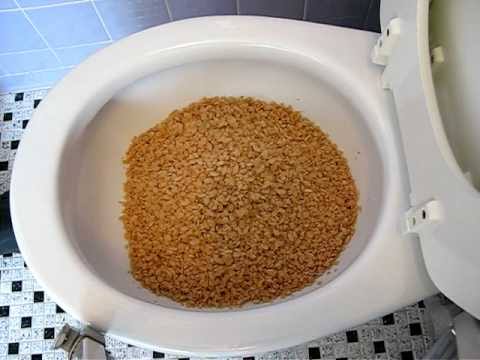The article author is making a few good observations relating to Think Twice Before Flushing Food Down Your Toilet overall in the content following next.

Intro
Many individuals are commonly confronted with the issue of what to do with food waste, specifically when it involves leftovers or scraps. One usual inquiry that emerges is whether it's okay to flush food down the toilet. In this post, we'll explore the reasons people might take into consideration flushing food, the consequences of doing so, and alternate methods for proper disposal.
Reasons that people may think about flushing food
Absence of recognition
Some individuals might not be aware of the potential damage brought on by purging food down the bathroom. They might mistakenly think that it's a safe practice.
Ease
Purging food down the toilet might seem like a fast and very easy solution to getting rid of unwanted scraps, specifically when there's no nearby trash can offered.
Negligence
In some cases, individuals might merely pick to flush food out of sheer laziness, without considering the consequences of their actions.
Effects of flushing food down the bathroom
Ecological influence
Food waste that winds up in waterways can add to pollution and injury aquatic environments. Furthermore, the water used to purge food can stress water sources.
Plumbing concerns
Purging food can lead to stopped up pipes and drains, causing pricey plumbing fixings and aggravations.
Types of food that need to not be flushed
Fibrous foods
Foods with fibrous appearances such as celery or corn husks can obtain entangled in pipes and trigger clogs.
Starchy foods
Starchy foods like pasta and rice can take in water and swell, leading to obstructions in pipes.
Oils and fats
Greasy foods like bacon or food preparation oils must never ever be purged down the commode as they can strengthen and create clogs.
Appropriate disposal approaches for food waste
Making use of a waste disposal unit
For homes equipped with garbage disposals, food scraps can be ground up and purged via the plumbing system. Nevertheless, not all foods are suitable for disposal in this manner.
Recycling
Particular food packaging products can be recycled, decreasing waste and minimizing environmental impact.
Composting
Composting is an eco-friendly means to dispose of food waste. Organic products can be composted and made use of to improve dirt for gardening.
The significance of appropriate waste administration
Minimizing environmental harm
Appropriate waste administration techniques, such as composting and recycling, help reduce air pollution and maintain natural deposits for future generations.
Shielding plumbing systems
By preventing the practice of flushing food down the commode, home owners can prevent costly pipes repair services and preserve the stability of their plumbing systems.
Final thought
Finally, while it might be tempting to flush food down the toilet for ease, it's important to comprehend the possible effects of this activity. By embracing proper waste monitoring methods and getting rid of food waste sensibly, people can add to much healthier plumbing systems and a cleaner atmosphere for all.
FLUSH FOOD DOWN THE TOILET?
FLUSHING FOOD CAN CAUSE BLOCKED DRAINS IN YOUR HOME
All of the plumbing fixtures in your home are connected to the same sewer pipe outside of your home. This outdoor sewer pipe is responsible for transporting all the wastewater from your home to the Council sewer mains. Even small pieces of food that go down the kitchen sink can cause problems for your sewer. It should therefore be obvious that flushing larger bits of food, such as meat, risks a clog in either the toilet itself or the sewer pipes. Flushing greasy food is even more problematic because oil coagulates when it cools, coating the interior lining of your pipes.
THE TOILET IS NOT A BIN
Food isn’t the only thing that people shouldn’t be flushing down the toilet. People use the toilet to dispose of all kinds of things such as tampons, makeup wipes, dental floss, kitty litter and even underwear. Water goes to great lengths to educate residents about the high costs and stress placed on wastewater treatment systems simply from people flushing the wrong stuff down the toilet. It costs taxpayers millions of dollars each year, and homeowners thousands in blocked drain repairs.
FLUSHING FOOD IS A WASTE OF WATER
Flushing food is a waste of our most precious resource - water. In June this year Level 1 water restrictions were introduced to protect water supply from drought conditions. Much of New South Wales continues to be affected by prolonged drought with recent figures revealing up to 97 per cent of the state remains in drought. Depending on whether you have a single or dual flush toilet, every single flush uses between five and 11 litres of water. In the current climate this is a huge amount of water to be wasting on flushing food that should be placed in the bin (or better yet, the compost).
https://www.jabplumbingsolutions.com.au/blog/can-you-flush-food-down-the-toilet

We hope you enjoyed our post on Think Twice Before Flushing Food Down Your Toilet. Thanks so much for taking a few minutes to read through our article post. Sharing is caring. You won't know, you could be helping someone out. Thanks a bunch for your time. Revisit us soon.
Click For More Information